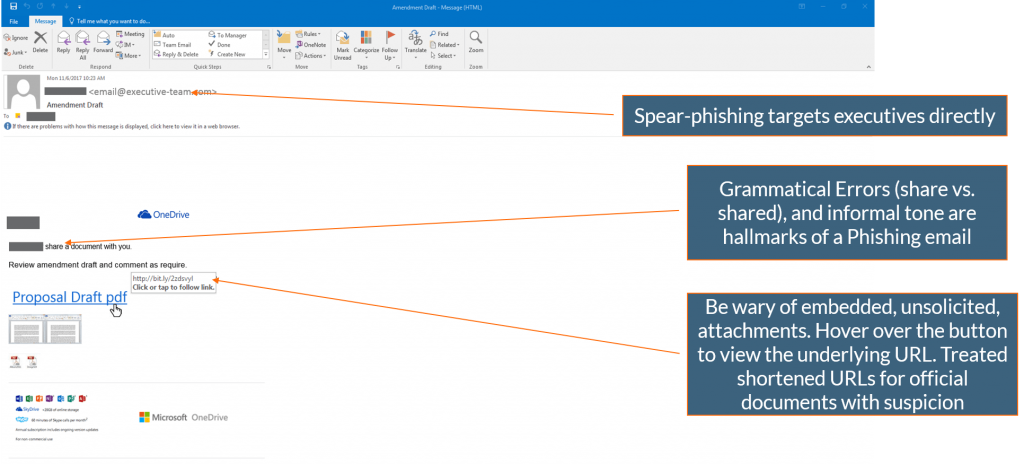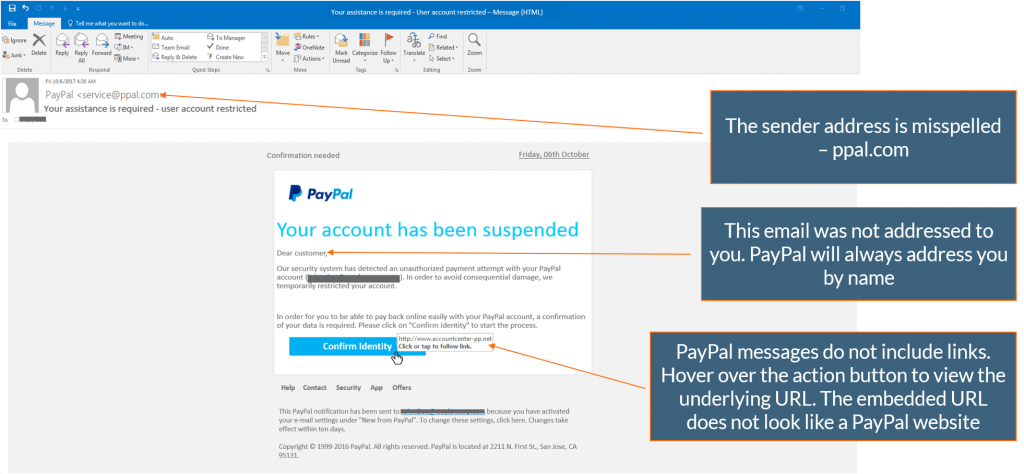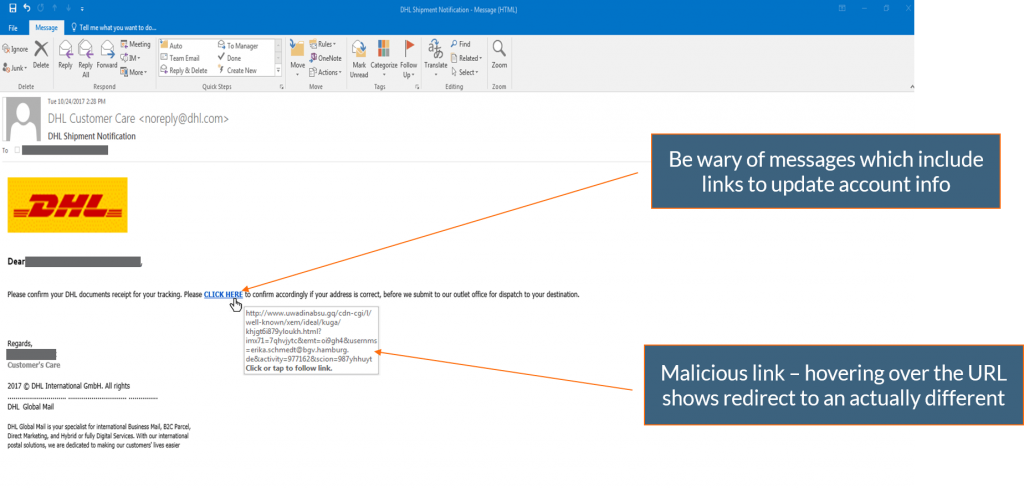What is phishing?
Phishing remains one of the most dangerous attack vectors for organizations and businesses to defend. Phishing is a form of fraud in which an attacker masquerades as a reputable entity or person in email or other forms of communication.
Attackers will commonly use phishing emails to distribute malicious links or attachments that can perform a variety of functions. Some will extract login credentials or account information from victims.
It’s important to ensure your employees can spot — and quickly mitigate — a potential attack before it compromises your network.
How phishing works
Typically, a victim receives a message that appears to have been sent by a known contact or organization. The attack is then carried out either through a malicious file attachment, or through links connecting to malicious websites. In either case, the objective is to install malware on the user’s device or direct the victim to a fake website. Fake websites are set up to trick victims into divulging personal and financial information, such as passwords, account IDs or credit card details.
Although many phishing emails are poorly written and clearly fake, cybercriminal groups increasingly use the same techniques professional marketers used to identify the most effective types of messages.
How to recognize fraud email?
Successful phishing messages are difficult to distinguish from real messages. Usually, they are represented as being from a well-known company, even including corporate logos and others collected identifying data.
Scams come in all shapes and sizes. Users can stay safe, alert, and prepared by knowing about some of the more recent ways that scammers have been phishing. Below, you can find a few examples of more modern email fraud attacks:
OneDrive’s Email Fraud example
PayPal’s Email Fraud example
DHL Email Fraud example
We recommend layering security controls, including:
- Antivirus software – Trend Micro
- SonicWall Firewall
- Antispyware software
- Antiphishing toolbar (installed in web browsers);
What is phishing?
Don’t get phished! Get smart. Stay ahead of the hackers.
Call Now: (01) 846 4200




